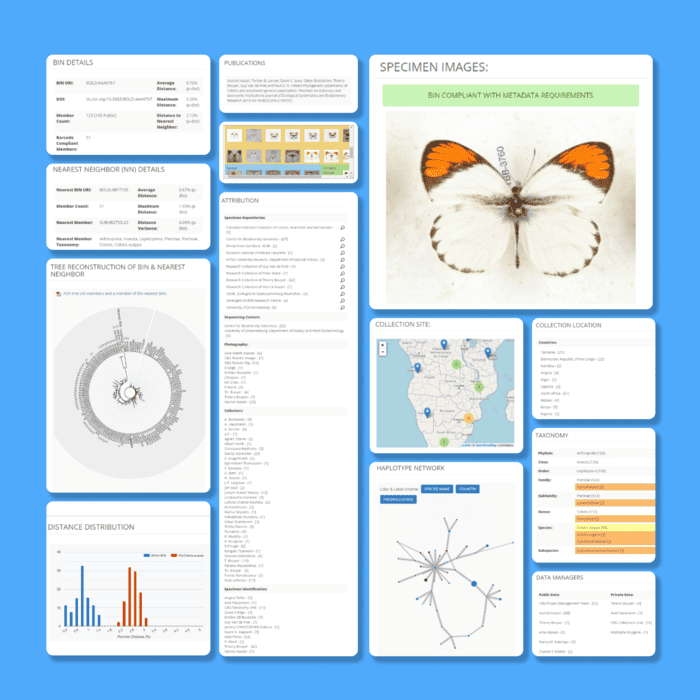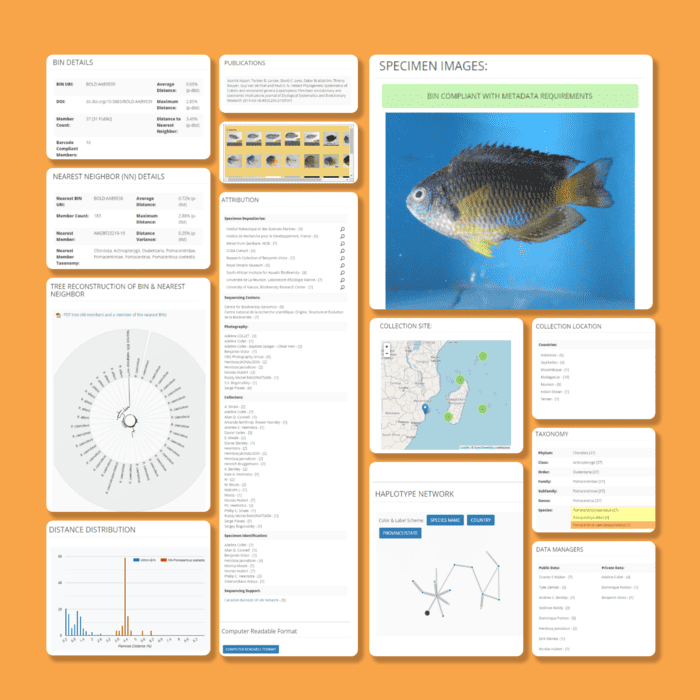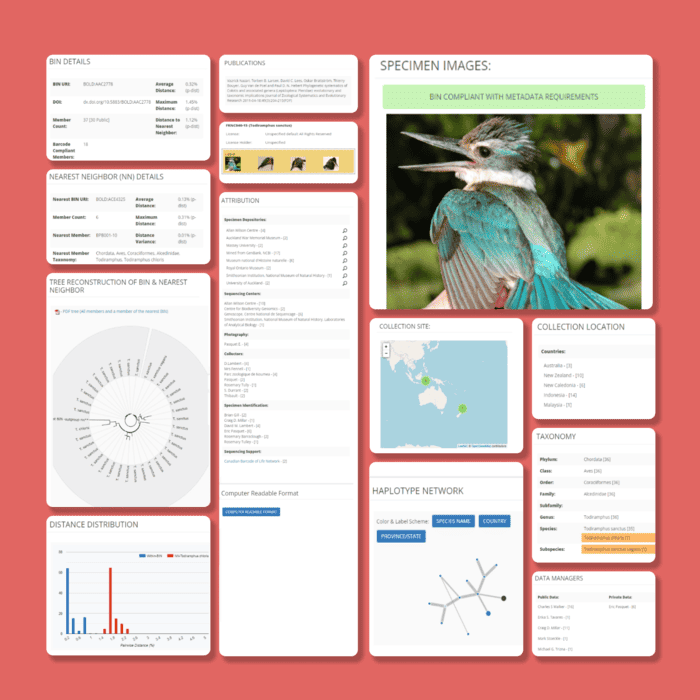888,019
Public Barcode Clusters
Purpose of BINs
The BIN system streamlines the identification of species by grouping sequences with high similarity, providing a digital framework for cataloging biodiversity. This approach accelerates research and enhances the accuracy of species identification.

How to Use BINs
Researchers can access BIN data through user-friendly search options, allowing queries based on taxonomic, geographic, or other relevant parameters. This facilitates targeted research and data extraction.
Step-by-Step Guide
- Search by Parameters: Enter specific search terms such as taxonomic group, location, or collector information.
- Review Clusters: Access clusters of sequences to examine species-level groupings.
- Data Download: Download sequence data and associated metadata for further analysis.
Impact on Research
Advancing Taxonomy:
BINs support taxonomists in delineating species boundaries and resolving taxonomic ambiguities. This enhances the precision of biodiversity studies.
Conservation Efforts:
By cataloging species, BINs aid in monitoring biodiversity and informing conservation strategies. They play a crucial role in identifying endangered species and tracking changes in ecosystems.





